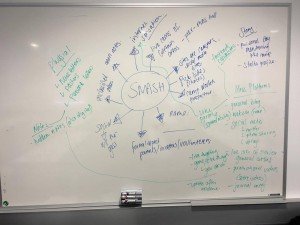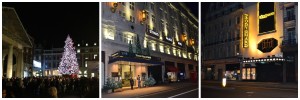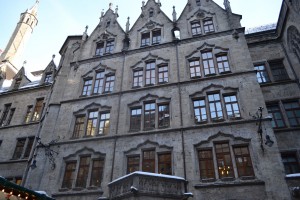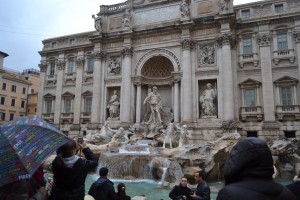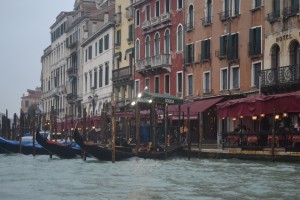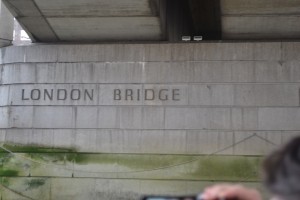Today’s tute was interactive and gave me a deeper more simplified understanding of how a story can be brought down to a structured linear medium. We had two activities to complete, the first was to choose a well known story, in our case Little Red Riding Hood and then break it down into a series of charts each specific to one of the below:
- Emotional Intensity– the feel of the story as it unfolds. How do we feel?
- Character Journey- the path the characters embark upon through the story and how prevalent are they?
- Themes- the main themes through the story and how much each character feels and are impacted by them?
- ???? (Our own chart)
This got us thinking and the charts are below:
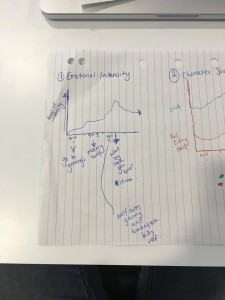
1. Emotional Intensity
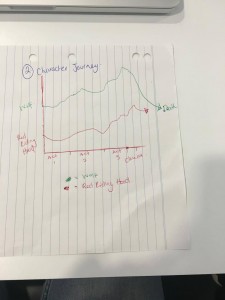
2. Character Journey
Little Red Riding Hood
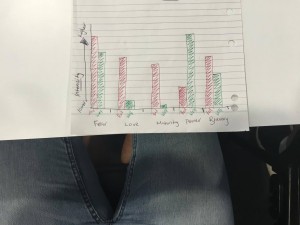
4. ???? Our own chart (Comparing the intensity of emotion of two main characters in regards to the different themes)
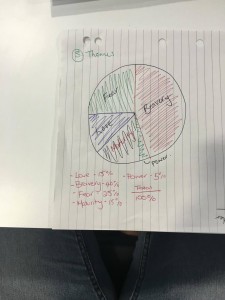
3. Themes Pie Chart
The main aspects I took away from this task were that story is able to be broken down into something as structured and linear as graphs because essentially it is a culmination of ideas that are categorised into different groups whether it be themes, emotional intensity or even character profiles. They all work cohesively to move the story forward. The other thing I discovered is that although in todays society we use story in a more creative and unique way, breaking it down back to its foundation will actually allow us to write are more throuough and detailed story that does not over describe or lag but actually inspires and evokes feelings from the reader.
This is lead largely by cause and effect. Without the cause for something the result of that action, dialogue or event can not take place and ultimately there will be no story. The second activity today really allowed us, in a trivial yet extremely useful way, to explore how certain locations, characters, professions, time and action effect the way a story is told. We had a bunch of different catagories and aligned them in an order that went-
Scene 1 Scene 2
Time – Place Time Place
Character – Profession – Action – Character – Profession – Action – Character – Profession
e.g
Day – Buckingham Palace Dawn – Bridge
Elizabeth – Physician – Watches T.V – Henry – Monarch – Bashfully Speaks – Holly – Bowling Alley Owner
The purpose of the above is that it gives you the basis of a story to build on. Like Queen Elizabeth a pseudo physician but Queen watches T.V with Henry who is a monarch, they see an ad about bowling and Henry decides to throw a surprise party for Elizabeth. So he meets with Holly the bowling Alley Owner. You see how (although simple) a plot is created and you have cause and effect. This essentially is the crux of all great film, novels and games (in instances). I also found this extremely useful in creating ideas for stories if you are stuck because it is a great stimulus to get creative juices flowing. Allowing un thought of ideas and storylines to pop into your head.
All in all it was beneficial in understanding the ‘rules’ if you will of story, but now it is our job to break those rules and create new and innovative ways of story telling on both a literary and trans-media platform.

